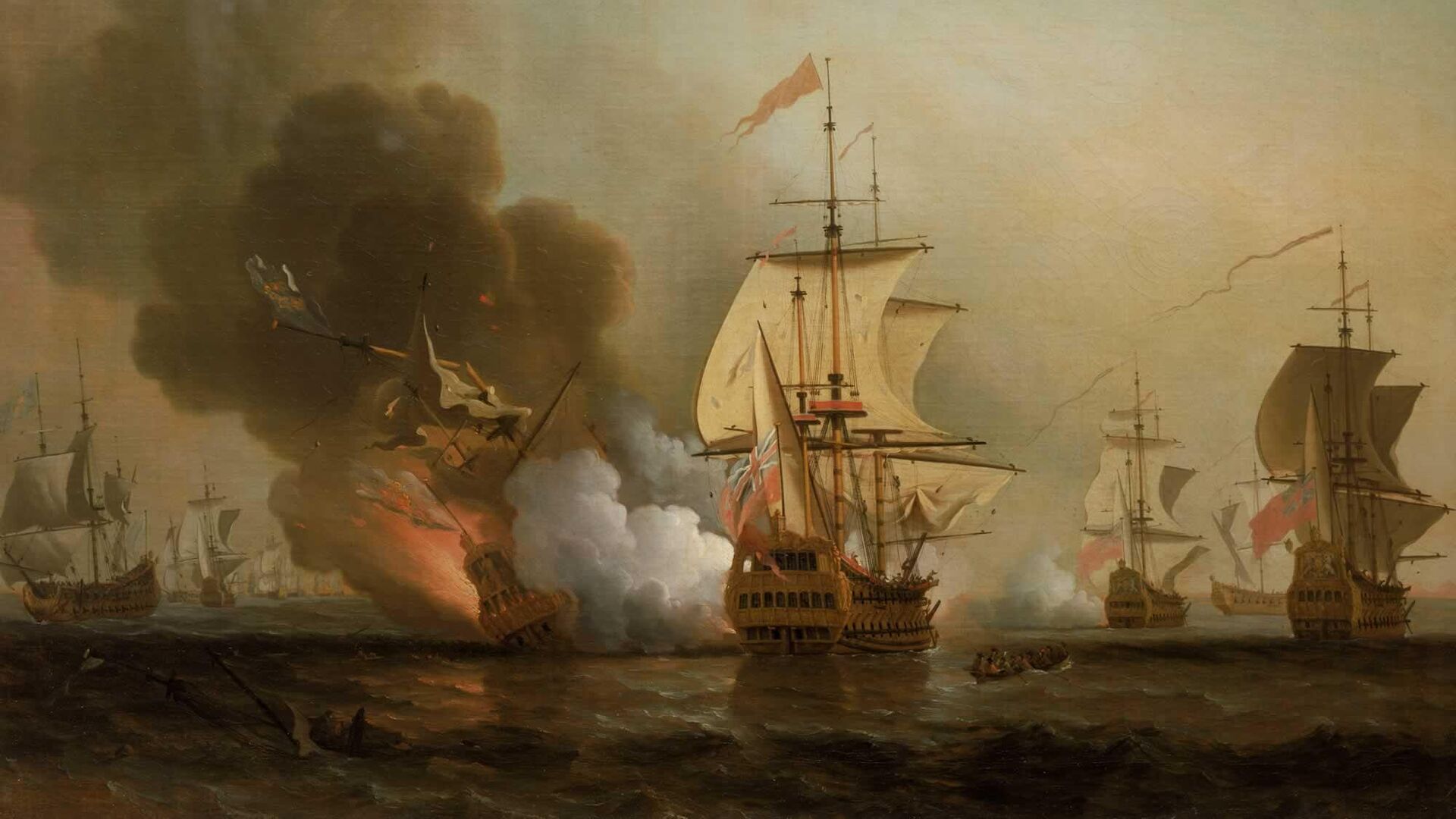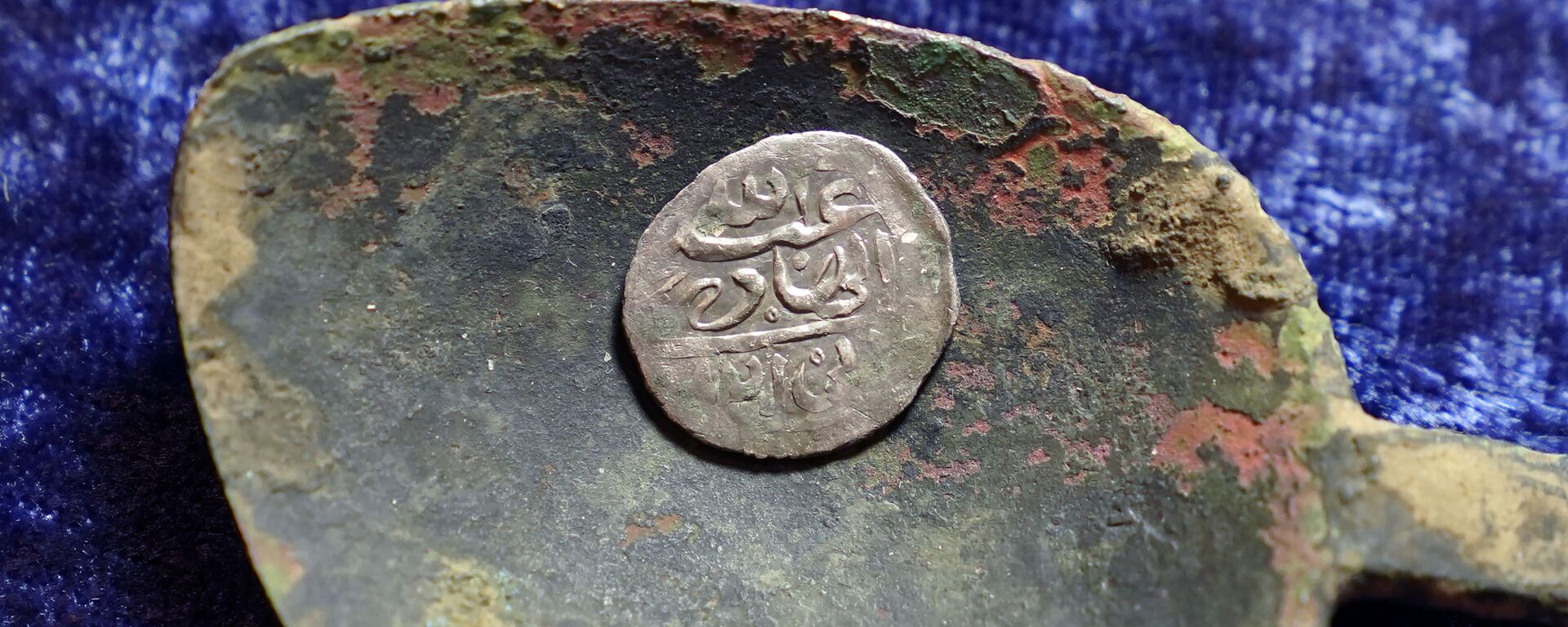https://sputnikglobe.com/20231106/colombia-rushes-to-raise-20bn-sunken-treasure-amid-finders-dispute-1114758127.html
Colombia Rushes to Raise $20bn Sunken Treasure Amid Finders' Dispute
Colombia Rushes to Raise $20bn Sunken Treasure Amid Finders' Dispute
Sputnik International
Adventurers believe the galleon San José, flagship of the Spanish colonial treasure fleet, was carrying 11-million gold coins each weighing an ounce when she was sunk in battle off the Colombian coast in 1708.
2023-11-06T13:05+0000
2023-11-06T13:05+0000
2023-11-06T13:05+0000
colombia
gustavo petro
san jose
cartagena
treasure
shipwreck
americas
united kingdom (uk)
britain
great britain
https://cdn1.img.sputnikglobe.com/img/07e7/0b/06/1114765200_0:273:2000:1398_1920x0_80_0_0_4bc27df4538f5a1927d17e970dd998ab.jpg
Colombia is in a hurry to raise $20 billion-worth of treasure from the “holy grail of shipwrecks” — although its ownership is still in dispute.Left-wing President Gustavo Petro has pledged to recover the 18th-century trove of Spanish gold coins for the South American nation before his term of office ends in 2026, and has authorised a public-private expedition to get the job done.Treasure hunters believe the Spanish galleon San José was carrying a vast fortune of up to 11 million quadruple doubloons, each weighing 27 grams — almost one ounce of 22-carat gold per coin — when she was sunk in battle in 1708.But the rights to the treasure are subject to a decades-long legal dispute between Bogotá and a group of US investors.The wreck of the San José was discovered near the port city of Cartagena on Colombia's Caribbean coast in 1981 by the Sea Search Amada (SSA) group bankrolled by the Glocca Mora Company.The Colombian government rejected the company's offer of a 65-35 percent split, and the country's congress later passed a law declaring the treasure state property and awarding SSA a mere five percent finder's fee — which would in turn be taxed at a rate of 45 percent. The firm launched a lawsuit against the government in 1989.Then in 2015, then-President Juan Manuel Santos announced that the Colombian navy had located the wreck of the San José at a different site to where SSA claimed to have found her.United Nations heritage agency UNESCO has urged the Colombian government to leave the wreck undisturbed.The 64-gun San Jose, launched in 1698, was sunk during the battle of Barú island, just south-west of Cartagena, in 1708 by a four-ship British flotilla commanded by Charles Wager.She was serving as the flagship of the Spanish treasure fleet under the command of José Fernández de Santillán, transporting gold back to Spain to fund the Franco-Spanish forces in the War of the Spanish Succession.Wag'r's flagship HMS Expedition drew as close as 60 metres to the San José in an attempt to board her and seize the gold. But after an hour of fierce fighting, with cannon fire exchanged at close range, the Spanish ship's gunpowder magazines exploded in a spectacular fireball, hurling sailors high into the air according to contemporary accounts. The ship sank in 2,000 feet of water and only 11 of the 600 men aboard survived.Even then the fleet's treasure was the cause of legal disputes. Wager prosecuted the captains of two other ships in his group at a court-martial for failing to capture other Spanish ships and leaving him with a meagre haul of booty.
https://sputnikglobe.com/20230508/ancient-treasure-found-in-romania-after-1700-year-break-1110165517.html
colombia
san jose
cartagena
americas
united kingdom (uk)
britain
great britain
spain
Sputnik International
feedback@sputniknews.com
+74956456601
MIA „Rossiya Segodnya“
2023
James Tweedie
https://cdn1.img.sputnikglobe.com/img/07e4/08/1c/1080307270_0:3:397:400_100x100_80_0_0_7777393b9b18802f2e3c5eaa9cbcc612.png
James Tweedie
https://cdn1.img.sputnikglobe.com/img/07e4/08/1c/1080307270_0:3:397:400_100x100_80_0_0_7777393b9b18802f2e3c5eaa9cbcc612.png
News
en_EN
Sputnik International
feedback@sputniknews.com
+74956456601
MIA „Rossiya Segodnya“
Sputnik International
feedback@sputniknews.com
+74956456601
MIA „Rossiya Segodnya“
James Tweedie
https://cdn1.img.sputnikglobe.com/img/07e4/08/1c/1080307270_0:3:397:400_100x100_80_0_0_7777393b9b18802f2e3c5eaa9cbcc612.png
sunken treasure, wreck of the spanish galleon san jose, legal dispute over treasure finders rights, colombian president gustavo petro.
sunken treasure, wreck of the spanish galleon san jose, legal dispute over treasure finders rights, colombian president gustavo petro.
Colombia Rushes to Raise $20bn Sunken Treasure Amid Finders' Dispute
Adventurers believe the galleon San José, flagship of the Spanish colonial treasure fleet, was carrying 11-million gold coins each weighing an ounce when she was sunk in battle off the Colombian coast in 1708.
Colombia is in a hurry to raise $20 billion-worth of treasure from the “holy grail of shipwrecks” — although its ownership is still in dispute.
Left-wing President Gustavo Petro has pledged to recover the 18
th-century trove of Spanish gold coins for the South American nation before his term of office ends in 2026, and has authorised a public-private expedition to get the job done.
"This is one of the priorities for the Petro administration," Colombian Culture Minister Juan David Correa told media last week. "The president has told us to pick up the pace."
Treasure hunters believe the Spanish galleon San José was carrying a vast fortune of up to 11 million quadruple doubloons, each weighing 27 grams — almost one ounce of 22-carat gold per coin — when she was sunk in battle in 1708.
But the rights to the treasure are subject to a decades-long legal dispute between Bogotá and a group of US investors.
The
wreck of the
San José was discovered near the port city of Cartagena on Colombia's Caribbean coast in 1981 by the Sea Search Amada (SSA) group bankrolled by the Glocca Mora Company.
The Colombian government rejected the company's offer of a 65-35 percent split, and the country's congress later passed a law declaring the treasure state property and awarding SSA a mere five percent finder's fee — which would in turn be taxed at a rate of 45 percent. The firm launched a lawsuit against the government in 1989.
Then in 2015, then-President Juan Manuel Santos announced that the Colombian navy had located the wreck of the San José at a different site to where SSA claimed to have found her.
United Nations heritage agency UNESCO has urged the Colombian government to leave the wreck undisturbed.
The 64-gun San Jose, launched in 1698, was sunk during the battle of Barú island, just south-west of Cartagena, in 1708 by a four-ship British flotilla commanded by Charles Wager.
She was serving as the flagship of the Spanish treasure fleet under the command of José Fernández de Santillán, transporting gold back to Spain to fund the Franco-Spanish forces in the War of the Spanish Succession.
Wag'r's flagship HMS Expedition drew as close as 60 metres to the San José in an attempt to board her and seize the gold. But after an hour of fierce fighting, with cannon fire exchanged at close range, the Spanish ship's gunpowder magazines exploded in a spectacular fireball, hurling sailors high into the air according to contemporary accounts. The ship sank in 2,000 feet of water and only 11 of the 600 men aboard survived.
Even then the fleet's treasure was the cause of legal disputes. Wager prosecuted the captains of two other ships in his group at a court-martial for failing to capture other Spanish ships and leaving him with a meagre haul of booty.





